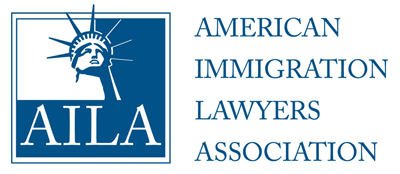Common USCIS Case Statuses: A Helpful Explanation

The Online Case Status is the same information you would get from speaking with a USCIS representative. The USCIS Case Status can be found here by inputting your receipt number: https://egov.uscis.gov/casestatus/landing.do
However, before diving into the “case status,” it may be beneficial to check the Processing Times of the filing. More information found here: /immigration/how-do-i-check-uscis-processing-times/
This post will dive deep into explaining what the statuses mean, and by placing them all together, a better picture of “progress” or “progression” can be seen. Not all possible statuses are provided below, but the following statuses are the most common for many filing types.
My Case Was Received
This is one of generally two starting emails. This status means a receipt notice was created and is being sent by mail to your mailing address. If the Case Status states: “My Case Was Received and an Email Was Sent” USCIS is trying to go digital, and that “email” part may mean that USCIS may want you to sign up for a USCIS Account to track your case status and receive electronic notifications.
My Case Accepted By The USCIS Lockbox
This is one of generally two starting emails. This status means a receipt notice was created and is being sent by mail to your mailing address.
My Fingerprint Fee Was Received
This means the $85 Biometric Fee has been received and applied to the filing.
My Case Was Updated To Show Fingerprints Were Taken
This status means the Biometric Appointment was completed, or in the rare/special case, past fingerprints from prior USCIS Filings applied the old records to the new USCIS Filing.
My Request for Additional Evidence Was Sent
USCIS either lost an important document in the file or they need an updated or new document in order to complete the file processing. USCIS mails this notice and it either provides 30 or 87 days to respond.
My Request for Additional Evidence Was Received
This status is a note that their RFE Request was received and that processing has resumed. No further action needed besides waiting for the next USCIS Notice.
My Case is Being Actively Reviewed
This status usually states “no action required” and that the filing is being processed in the order it was received.
My Case Is On Hold
This status means that USCIS is reaching out to another Agency for a review or processing. USCIS does not handle all of the Immigration Filings and in some cases, they may communicate with the DOS for some processing or input. Common for J-1 I-612 Waiver Filings.
My Case is Ready to Be Scheduled for An Interview
This status means the filing has been transferred to the local USCIS Office for the interview. Communication with USCIS would shift from USCIS Contact Center or the USCIS Regional Processing Centers to the local field office since that is where the important filing, usually the I-485, I-751, or N-400 is located at.
My Case is Scheduled for An interview
This status means an interview has been scheduled and a USCIS Notice will arrive in the mail with instructions and the date and time of the interview.
My Case Was Submitted For Quality Review Based On An Approval Recommendation
This status is common for N-400 cases. Since the N-400 means someone is becoming a US Citizen, the alien file may need some attention or work on correcting errors prior to the Naturalization Oath Ceremony to become a US Citizen.
My Case Was Approved
Everyone loves this status. It means the filing was successful.
My Card Was Mailed To Me
This status means the immigration document was placed in the USCIS mailroom, awaiting USPS pickup.
My Card Was Picked Up By The United States Postal Service
USPS picked up the document and a USPS Priority Tracking Number should be provided in the status. Recommend closely monitoring the USPS Tracking, since quick action is needed if USPS encounters problems.
My Card Was Delivered To Me By The Post Office
USPS notified USCIS that the document was delivered. Check your mailbox immediately!
My Case Was Sent To The Department of State
This status is common for I-130 and I-129F Petitions. Once USCIS Completes the processing, the National Visa Center would receive the filing for the preparation of processing the filing at the US Consulate or Embassy abroad, which are part of the Department of State (DOS).
My Certificate Of Naturalization Was Issued
This status means a new US Citizen has been created and congratulations!
Based on the common case statuses, you can see a pattern or progression of a case as it processes through the USCIS System and many officers to either an approval or interview. The Online Case Status system are like cogs or wheels slowly spinning, one turning the other until a final result is reached.
Can you hire an Attorney after submitting a US Filing?
Generally, Yes, you can hire an attorney at any stage of a filing. However, an immigration attorney would likely only allow themselves to be hired if they feel their service could bring some benefit to the pending filing.
Can I refile if a filing is denied?
Possibly, but the important thing to note is the reason for the denial. If that reason has not be “corrected or fixed,” then a refile would lead to the same result, a denial. Speaking with an Immigration Attorney is very wise after receiving a denial (even a rejection).
If you have any concerns, you should speak with a local Immigration Attorney, or you may contact Fickey Martinez Law Firm, P.L.L.C. to set up a Consultation.
Related Blog Post:
Disclaimer: This Blog is made available by the lawyer or law firm publisher for educational purposes only as well as to give you general information and a general understanding of the law, not to provide specific legal advice. By using this blog site you understand that there is no attorney-client relationship between you and the Blog/Web Site publisher. The Blog should not be used as a substitute for competent legal advice from a licensed professional attorney in your state.
The post Common USCIS Case Statuses: A Helpful Explanation appeared first on Fickey Martinez Law Firm.












